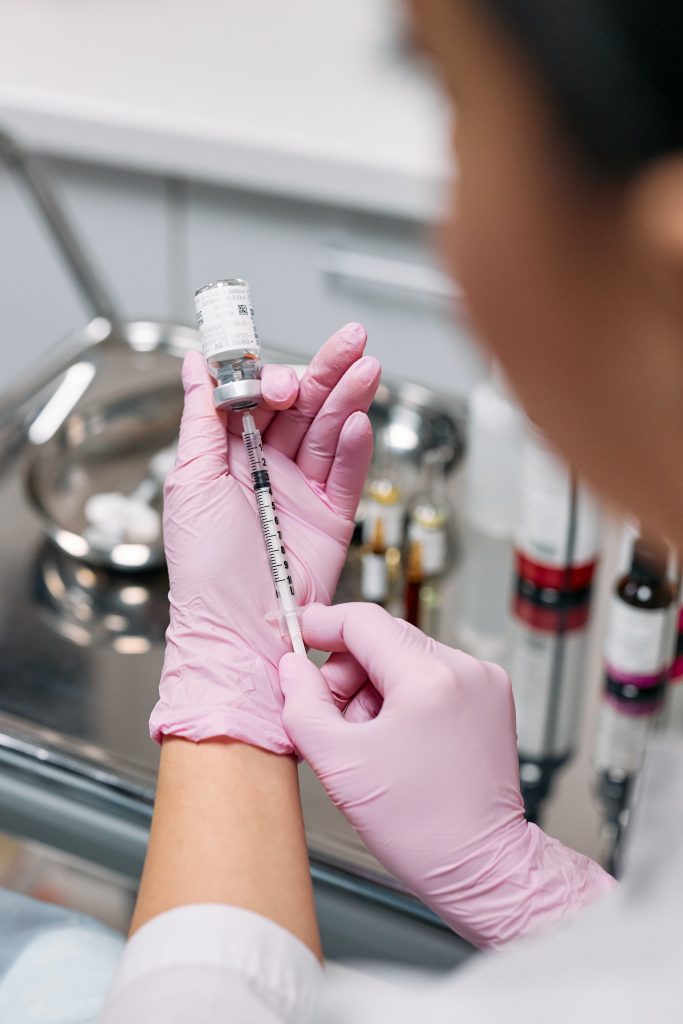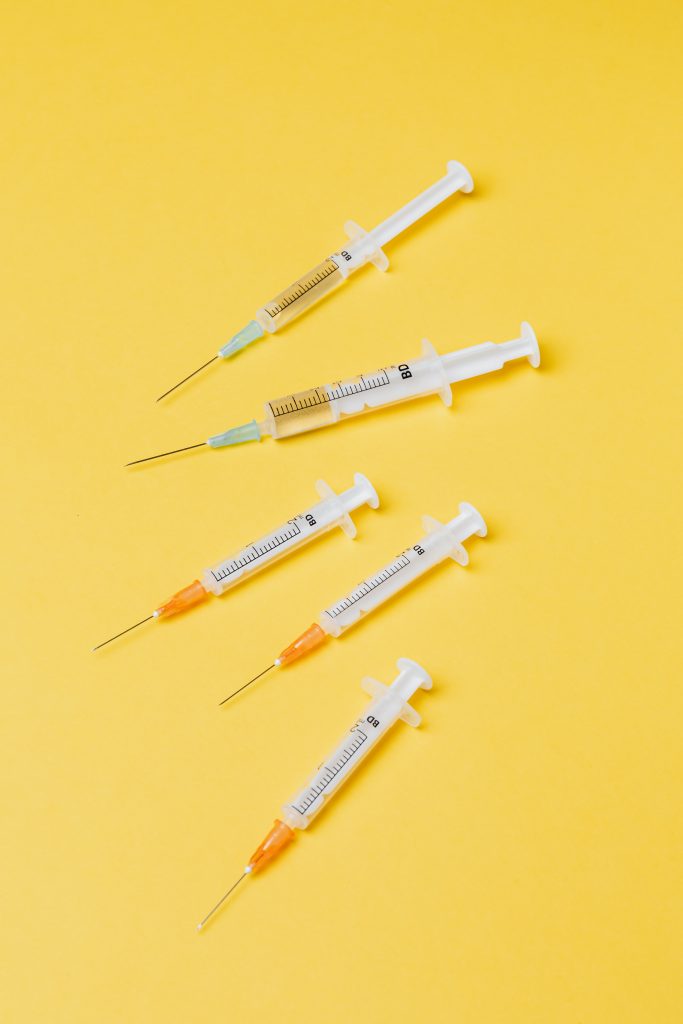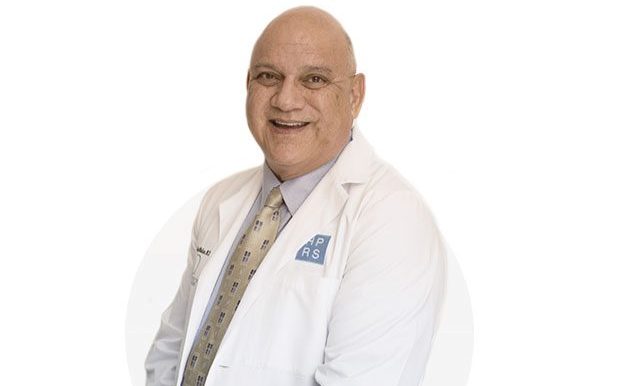From dark circles to hollow under eye areas, we all struggle with a sensitive area of our complexion that tends to look dull. Under-eye fillers seem to be the fix-all solution to this particular problem, giving us a more youthful and rested appearance.
But there are so many questions out there regarding under-eye fillers, from costs, how long it lasts, to what types are the best to use, and when is the best time to consider doing this procedure.
In this article, we have Board-Certified Aesthetic Plastic Surgeon Dr. Fred Aguilar to give you all the details you wanted to know before considering these injections, together with the latest news on under eye fillers, and a video to show you exactly what happens during the procedure.

What Is Under-Eye Filler?
Under-eye filler is a cosmetic procedure used for those with a sunken-in lower lid. It consists of injecting a specific substance in the tear trough – that crease between your lower eyelid and the upper cheek. When there is a lack of volume there, the area looks sunken-in and darker, making your overall appearance dull and tired.
Dr. Aguilar further explains the leading causes of this process, which are aging, trauma, or genetics. Let’s break it down below and understand what each of those means:
- Genetics: First, some people have a sunken eyeball due to hereditary factors; this causes that under-eye area to recede, so there’s always darkness there. The main concern here is how an area catches the light – a more receded one will have a shadow while a prominent one looks illuminated.
- Trauma: In some cases, a past trauma within the eye area may cause the orbits to have a particular shape or be different from side to side. In such circumstances, a filler is instrumental in balancing everything out.
- Aging: Last but not least, the aging process is a big part of this sunken-in effect. As the years go by, the face loses firmness and elasticity, whether muscle or skin.
As Dr. Aguilar puts it, the facial tissues fall downward, so the lower eyelids get longer. The result is a lack of volume in the under-eye area and under-eye darkness.
What Is the Best Under-Eye Filler?
When it comes to under-eye fillers, there are a few options that you can choose. Each has specific characteristics, is recommended for particular areas of the face, and lasts for a few months or 3-5 years.
Keep reading to find out the pros and cons of each of them and get a better understanding of how they all work.
Hyaluronic Acid – the best for tear trough under eye filler injections
Hyaluronic acid (HA) is a naturally occurring substance within the body, usually found in the skin, eyes, and connective tissue; it’s a gel-like transparent ingredient. The main benefit of HA is retaining water, keeping the tissues moist and hydrated; it also stimulates the production of collagen, which gives that plump appearance.
In the world of under-eye fillers, hyaluronic acid is usually the go-to substance; the gel-like and soft texture is perfect for giving volume to that receded area and lifting shadows and darkness. But not all HA fillers are made the same.
Restylane – Dr. Aguilar’s recommended under eye filler
Dr. Aguilar says that Restylane is the way to go for this particular procedure – it has less viscosity, attraction to itself and generally acts well under the fragile skin around the eyes. There are a few options for the product, one made explicitly for the under-eye area. Always talk to your doctor to find the right one for you.
Juvederm – not recommended for tear trough under eye procedures
Juvederm is another popular hyaluronic acid-based filler but not suited for the eye area. This one has a different texture – “it’s too thick, it’s too much water, and they tend to glob together,” Dr. Aguilar explains.
A few products derived from Juvederm are targeted towards specific areas of the face like cheeks, lips, or around the nose and mouth. Juvederm is considered to have more durable results than Restylane.
Calcium Hydroxylapatite
Another injectable filler is calcium hydroxylapatite; the gel-like substance has been FDA approved since 2006, providing long-lasting results. Depending on the person, you may need touch-ups once every two years.
Another bonus point for this particular filler is that it stimulates natural collagen production very well. The latter is a substance within our body that supports the skin’s firmness and gives us that plump and fresh look.
Poly-L-Lactic Acid
Poly-L-lactic acid is a synthetic substance used as a filler in different face areas. It acts by adding volume and stimulates the natural production of collagen.
Poly-L-lactic filler is not fast-acting since it takes 2 to 3 sessions to achieve the desired results. But once reached, these results will last 2-3 years before ever needing extras, making this one of the most durable fillers out there today.
Polymethylmethacrylate (PMMA)
Polymethylmethacrylate is a semi-permanent filler made of microspheres suspended in bovine collagen. It’s used to correct profound wrinkles around the mouth (nasolabial folds) or fill deep scars
PMMA is very long-lasting – depending on the patient, it can last around five years. This is the only filler not absorbed by the body since it consists of microspheres (tiny plastic beads).
Autologous Fat Injections
Fat injections are an excellent way to fill certain parts of the body that suffer from volume loss. They have the great advantage of being natural, from within our own body, so it has minimal chances of having severe side-effects and no allergy concerns.
The procedure of injecting itself is effortless, with minimal discomfort, and the results can last for a few months or more, depending on how quickly the body reabsorbs the fat. It does require previous collecting of fat, of course.

How to Know if You’re a Good Candidate for Under-Eye Filler?
According to Dr. Aguilar, anyone who lacks volume in their under-eye area is a good candidate for this particular procedure. Using under-eye fillers will restore a more plump look, lifting the darkness and that constantly tired look.
Some go through this aging process too quickly, and they have a pocket of fat that goes downward; so what they’re left with is a sunken-in area, a bump, and then another “valley.” The dilemma is whether to inject filler here or remove the fat.
Those who are not good candidates for fillers have severe fat pockets in that under-eye area. There is no point putting another prominent substance there that will only compete with the existing fat.
Fillers for Dark Under-Eye Circles
First of all, let’s establish where under-eye circles come from. The causes are many, from genetics, lack of sleep or specific allergies, and hyperpigmentation (the body usually produces extra melanin due to sun exposure). Dr. Aguilar says people with oily skin also tend to be darker under the eyes because oils absorb light, making it look like a permanent shadow there.
Another important cause for dark circles is the lack of volume we’ve talked about throughout this article. That receded area will always look darker because of the shadow formed. This is the only part that fillers can fix – the others are more complex issues with other solutions.
Filler and Wrinkles
In the under-eye area, fillers are not the best idea for wrinkles. There are too many small and intricate lines here, so the doctor cannot possibly inject the substance in such a controlled way to target them all.
Fillers are suitable for other areas of the face because they can lift deep wrinkles, like the nasolabial ones. But those stand on their own, so finding the right approach to them is way easier.
Botox is a much better solution for the under-eye area. It is actually a botulinum toxin, produced by bacteria, that paralyzes the muscle. Botox is used for dynamic wrinkles formed in the mobile areas of the face, such as the mouth or eyes.
How Many Syringes of Under-Eye Filler Will You Need?
Generally speaking, the usual amount is one syringe, split between both eyes. But that can vary from person to person, depending on the severity of the problem. More can be added if needed, but it’s better to do it later in a follow-up session.
Dr. Fred Aguilar says he prefers to put smaller amounts at a time, so the results are close to perfection. Putting too much has the significant risk of making your patients unhappy because it would not look natural at all. The result would seem overdone because ” they’re too full, they can see the globs of stuff that’s in there.” He further explains that he prefers to call patients back in two weeks and put more filler if needed.
Another thing is you need to go deeper with the filler to get the most natural look. Placing it too superficially will cause two main problems – looking too evident and bruising. Too close to the skin surface would be very visible and gloopy; there are also more chances to hit blood vessels and cause severe problems.
Placing the under-eye filler at the very low, bone-level is the best way to go, the plastic surgeon tells us, as “it provides a good base for that filler to exert its effect.”

How Long Does Under-Eye Filler Last?
Depending on the type of filler, results may last for a few months, up to 3 or even 5 years.
Hyaluronic acid is not very long-lasting, but it does have the value of giving very natural-looking results. According to Dr. Aguilar, results are usually maintained for 6-12 months; however, he calls in his patients at around 10 months since certain people burn it up faster than others (meaning the HA is absorbed faster, so touch-ups are necessary).
How Safe Is Under-Eye Filler?
While any cosmetic procedure may have complications, fillers are considered relatively safe. According to Dr. Aguilar, Restylane is very well tolerated since hyaluronic acid is a naturally occurring substance within the body. Allergic reactions are thus very rare, but it’s still a good idea to do an arm test on the patients first.
However, possible complications can appear when having under-eye fillers, so consider the following before committing to it: headaches, swelling or bruising, granuloma (the product clusters together, making the area look bumpy), infection, or vascular problems.
It’s worth mentioning these vascular problems may cause permanent blindness in very rare cases. If the needle punctures a blood vessel and there is too much pressure, it may cause retinal artery occlusion. Basically, the retina is deprived of oxygen, leading to blindness to one or both eyes.
At this time, there have been 98 cases of blindness reported, with only two of them being successfully reversed. The main culprit in these cases was autologous fat injections, followed by hyaluronic acid filler (either Juvederm or Restylane).
It is worth mentioning that ocular problems were associated with injections in different parts of the face, such as the forehead, nasolabial area, glabella (between the eyes), so not necessarily in the under-eye area.
What to Expect From Under-Eye Fillers?
We’ve established some basics when it comes to under-eye fillers, now let’s break down the practical aspects and what will happen, step-by-step.
How Long Until I See the Results?
You will see results immediately with under-eye fillers since the area will have added volume. The maximum effects are often seen within a week, and by that time, any swelling or bruising should go away.
Does Getting Under-Eye Filler Hurt?
Many wonder if getting under-eye filler injected causes a lot of pain. The answer here lies within the needle – ” it’s a 30-gauge or a 27-gauge needle which actually, most people tolerate beautifully,” Dr. Aguilar explains.
The pain is minimal, so there’s no need for numbing cream; in Restylane, for example, there’s a local anesthetic that will start acting once injected. This way, any minimal discomfort will subside from the moment you inject the substance.
In the featured video, you can see Dr. Aguilar injecting the filler on both sides of my under-eye area. I can assure you the discomfort was minimal, only feeling a slight jab when the needle penetrated the skin.
There are, however, more sensitive people, those who feel pain more intensely. So, in this case, the doctor may apply numbing cream about 20 minutes before the injection (the time it takes for it to work).
How Much Does Under-Eye Filler Cost?
The final price of injecting under-eye filler varies by the product your doctor is using, the amount needed, and the brand involved.
For Restylane, the price is about $675 per syringe, and usually, that’s the quantity you will need for both eyes. Others may cost up to $1-3.000, depending on the necessary amount and the type of filler.
But consider that you only have to do them once every few months or years, and the costs aren’t that great. As Dr. Aguilar puts it, Restylane will be about $65 per month if done once a year.
Get this Procedure Done By Board-Certified Professionals Only
Always keep in mind that you should choose professionals only when it comes to your health. For under-eye fillers, choose dermatologists that have a lot of experience with injecting or plastic surgeons/ facial plastic surgeons.
Never settle for anything less because that is where the complications are more likely to occur. If fillers are injected too close to the skin’s surface with too much pressure, severe vascular complications may appear, sometimes with tragic consequences.
Dr. Aguilar advises never to go to the spas that offer this service. The practitioners are usually family doctors or emergency room doctors; they lack experience and may cause more harm than good. Always go for the board-certified professionals.

How Under-Eye Fillers Feel and Look In Real Life
In the attached video, you will see these types of fillers in action. Dr. Aguilar shows us the proper way to inject Restylane in the under-eye area – he uses a small 27 gauge needle that is so thin, I could barely feel anything.
As stated above, he places the substance profound at the base of the bone, where it has room to exert its effect. With barely any pressure, slow and steady is what wins the race here; this way, there’s minimal chance of hitting blood vessels or causing that bumpy and overdone look.
The results, in my case, are visible immediately – the area is lifted, so there’s no longer that indent looking like a shadow. Dr. Aguilar holds a little pressure at the injection site to prevent any bruising or swelling.
Takeaways
When having a hollow and dark under-eye area, fillers are the best solution for you. They are relatively safe if you choose a board-certified professional with a lot of experience – never settle for less since your health and wellbeing is at stake!
As you can see in the featured video, the procedure is very straightforward, and the discomfort is minimal, so talk to your doctor today and find out your best options.





